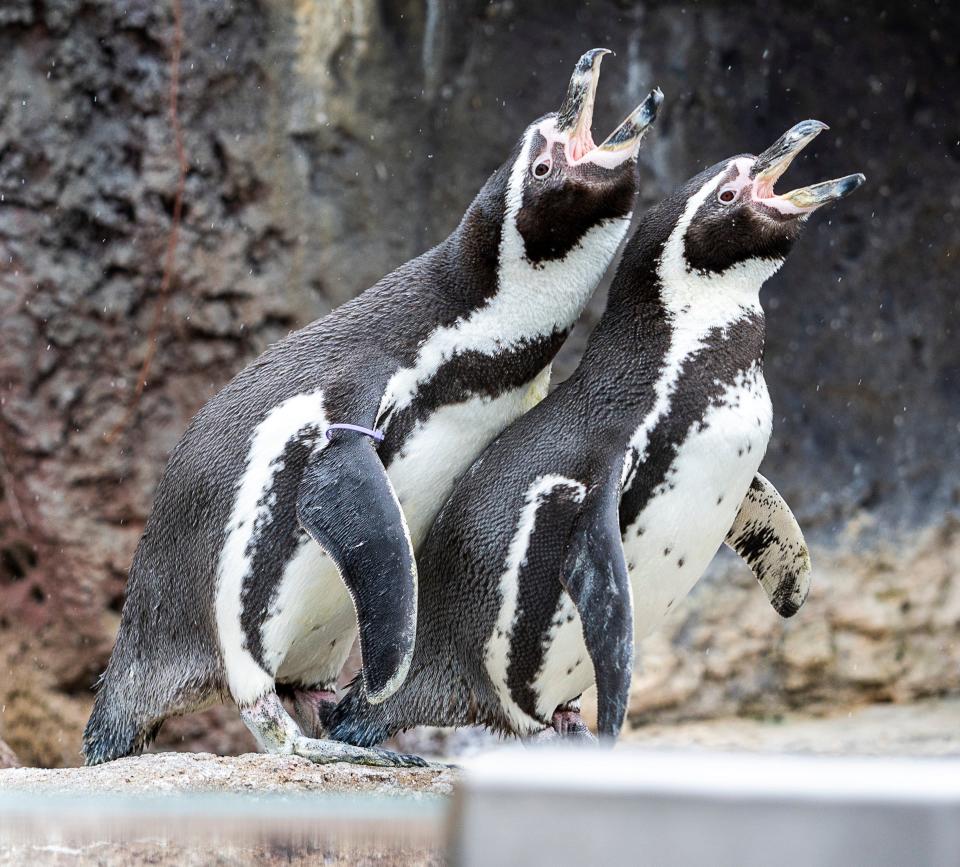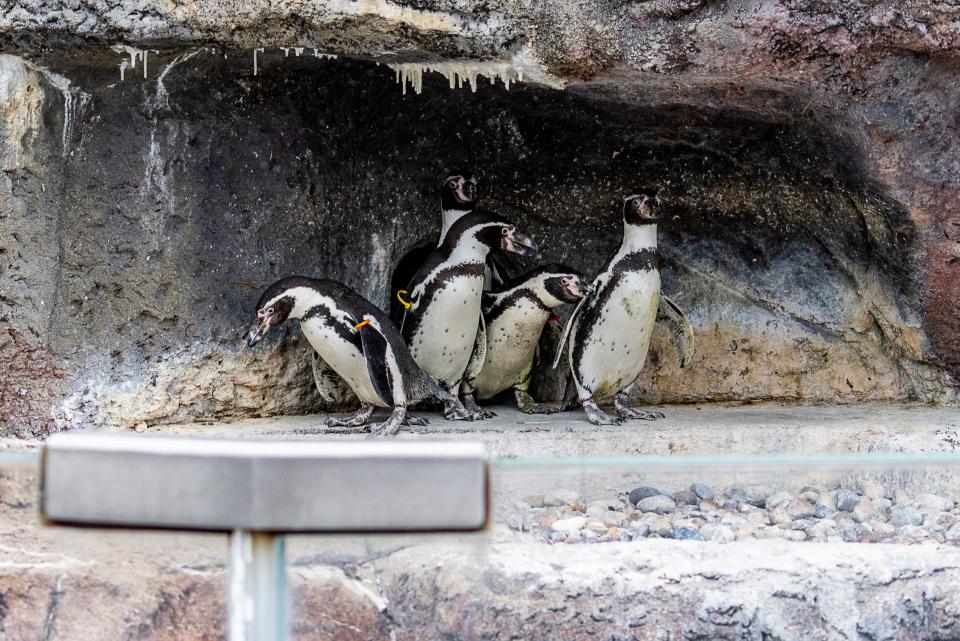On Groundhog Day, penguins, the Milwaukee zoo's honorary groundhog, made this prediction
Did the Milwaukee County Zoo's groundhog see his shadow this Groundhog Day?
Well, no.
But that's because there wasn't a groundhog in attendance. The zoo's groundhog, Gordy died last year, and the zoo has not procured his replacement yet.
However, the groundhog's stand-in, a group of Humboldt penguins, didn't see their shadow either. According to tradition, that means an early spring.

When is Groundhog Day?
Groundhog Day is Feb. 2 every year. It's a tradition that derives from a superstition that if the weather is sunny and a groundhog emerges from its den to see its shadow, it will return to its burrow for six more weeks of winter. If it's a cloudy day and it doesn't see its shadow, there will be an early spring.
Why didn't a groundhog make the zoo's Groundhog Day prediction?

A groundhog typically makes the prediction at the zoo's annual Groundhog Day ceremony. However, Gordy — the groundhog who had been making the zoo's predictions since 2019 — died about a month after making his 2023 prediction (of six more weeks of winter).
The zoo also went groundhog-free on Feb. 2 in 2018 because Gordy's predecessor groundhog, Wynter, had died. Instead, Snow Lilly the polar bear stood in at the zoo's 2018 ceremony. She predicted six more weeks of winter.
In 2018, Journal Sentinel columnist Jim Stingl wrote that an actual groundhog had represented the zoo in its annual Groundhog Day celebration for the 37 years prior to 2018, except in 2011 when the event was canceled because of a blizzard.
Stingl also noted that "historically bears were once used for this old German celebration at the roughly halfway point between the winter solstice and the spring equinox. Presumably, they weren't calling it Groundhog Day back then."
This year, the zoo decided to go completely without a mammal. Instead, it chose Humboldt penguins for the ceremony.
Did the penguins see their shadows at the Milwaukee County Zoo's Groundhog Day ceremony?

At the zoo's 9 a.m. ceremony on Feb. 2, the penguins came outside and didn't see their shadows, predicting an early spring.
In an interview before the big day, the zoo's birds curator, Alex Waier, said the plan was to shift the approximately 15 penguins who live in the habitat into their indoor space the night before Groundhog Day, then open up one of the doors at the time of the ceremony, giving them access to the outdoor part of their habitat.
"I predict they'll come out willfully and probably gleefully to have access to their pool," Waier said. "They might all just jump right into the water."
That particular prediction didn't quite pan out. When the door opened, the penguins all waddled to their outdoor habitat. Then two of the penguins started singing in unison, announcing an early spring to the spectators. After their announcement, several of the penguins seemed to decide it was indeed time to jump into the water.
Waier said zoo administrators approached him for ideas when they were deciding which animal should replace Gordy for this year's Groundhog Day ceremony.
"The zoo is kind of limited by what animals can and can't go outside this time of year; a lot of them are in their winter habitats," Waier said.
And although a lot of people associate penguins with cold weather, many breeds are quite adaptable, according to Waier.
"Humboldt penguins are temperate, which means they have a broad range of temperature parameters they can live within," Waier said. "And Humboldts are pretty northern-ranging, considering they're a southern hemisphere animal. They nest and breed in Chile and Peru."
This article originally appeared on Milwaukee Journal Sentinel: Milwaukee County Zoo's penguins make Groundhog Day prediction

